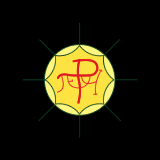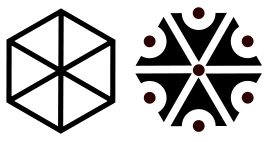
|
Characteristics of Perun
Perun represents justice and order. He was the purifier, as well as the devil's principal adversary. His actions were manifested in lightning, thunder, storms whirlwinds and fire; and ancient men heard his voice in thunder, and believed it drove away the devil and other evil forces. Many scholars see the origin of music, use of musical instruments and bells, and the beating of drums as attempts to imitate the voice of Perun, and part of the magical efforts to protect the world from the evil forces and spirits.Perun has been represented as as a rugged man with a copper beard and also a man with silver head (hair) and a golden moustache or beard. Perun has also been portrayed as a tall and well-shaped man, with black hair, and a long golden beard. He rides in a chariot pulled by a bull or he-goat with his fiery bow in his right hand and shoots his arrows (lightning) at evil people and spirits. He also uses his arrows to pierce the clouds with shafts of lightning and bring his fertilizing rains. Sometimes he flies abroad on a great millstone, which is supported by the mountain-spirits who are in subjection to him, and who, by their flight, give rise to storms. In the Spring, Perun goes forth in his fiery chariot, and crushes with his blazing darts the demons, from whose wounds the blood is sometimes described as streaming forth. That is to say, the lightning pierces the clouds at that season of the year, and causes them to pour forth rain. By the time of Vladimir, Perun was more war-like, probably the Viking/Thor influence. While always a god of warriors, Perun was more of a Defense God, than a War God in earlier times. All big trees were sacred to Perun, but he especially loved the oak. There are records of oaks being fenced in as sacred to him. Particularly distinctive or prominent oaks were especially associated with Perun. In Southern Slavic traditions, marked oaks stood on country borders; communities at these positions were visited during village holidays in the late spring and during the summer. Shrines of Perun were located either on top of mountains or hills, or in sacred groves underneath ancient oaks. There is evidence that sacred and consecrated oaks were situated in some form of enclosure, usually, surrounded by a ditch, a stone ring or a fence. Some featured statues, but there didn't seem to be an absolute requirement for images. These were a general place of worship and holding of sacrifices. It was much later near cities that buildings were constructed for worship and images became a regular feature. The early circles tended to be for a single god, while the buildings were polytheistic. Temples to Perun tended to be octagonal and on high ground. A perpetual fire was maintained in his honor; if it went out, it was rekindled by the use of a stone. Worshippers laid arms at his idol's feet, and stuck arrows around oak trees in his honor. Sacrifices to him usually consisted of a rooster, but on special occasions, bear, bull or he-goat might be killed. The sacrificed animal was then communally eaten. It was believed that such a feast would strengthen the bonds between the group's members. Some say that by eating the flesh they were seen to be imbued with the power of their patron God. Human sacrifice was not a feature of the old Slavic religion. Reports of human sacrifice were most likely propaganda against the religion, while it may be possible that some wicked people did this. Perun's sacred animals are the bull and the he goat, his birds the eagle, dove and the cuckoo. One geometric symbol was his 'thunder wheel', which was apparently a six-spoke wheel. This seems to have symbolized the thunder-chariot and was similar to that of the depictions of Taranis, the Gallo-Roman thunder-god. A six-petalled rose within a circle was carved on roofs to protect houses from thunder and lightning, and the symbol may have been associated with Perun.
Similarly to Perkunas of Baltic mythology, Perun was considered to have multiple aspects. In one Baltic song, it is said there are in fact nine versions of Perkunas. Remains of an ancient shrine to Perun discovered beneath medieval Peryn skete in Novgorod consisted of a wide circular platform centred around a statue, encircled by a trench with eight apses, which contained sacrificial altars and possibly additional statues. The overall plan of the shrine shows clear symbolism of the number nine. This is sometimes interpreted that Perun, in fact, had nine sons (or eight sons, with himself, the father, being the ninth Perun). It should also be noted that in some Slavic folk songs, nine unnamed brothers are mentioned. |
